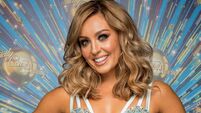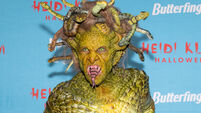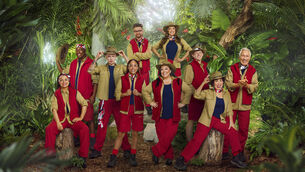Cooking up a storm
Today, they make up seven of the top 20 best-selling books. But foodies know they’re not just about the recipes — they’re about creating a lifestyle. Here, Joe McNamee and three well-known Irish faces pay homage to the genre.
A history of the cookbook could well be divided into two parts. The first, spanning roughly 3,500 years and largely the province of academic epicureans, begins with recipes written on clay tablet (Babylonian, from 1500BC), followed by a nod to Apicius, a Roman collection put together in 400-500AD.
The brilliant Jean Anthelme Brillat-Savarin — “Tell me what you eat, and I will tell you what you are” — was a gastronome, an epicure and the first ‘food writer’ but his renown has blossomed since his death in 1826.
Or how about reflecting on the once grimly successful Mrs Beeton, author of Mrs Beeton’s Book of Household Management.
It was later speculated, without firm evidence, that she died of syphilis, in 1865, and that she ripped off recipes (though she had not claimed they were hers) from others, the only credit due her, she did it without Wikipedia.
There’s the exceedingly quirky Alice B Toklas’s quirky cookbook/memoir, published in 1954, noteworthy for its hash brownies recipe. Toklas’s life partner was writer Gertrude Stein.
In the second half of the 20th century, saw the emergence of some of the giants of food writing, among them Elisabeth David, Claudia Roden and Julia Child, but cooking was still seen as mostly ‘women’s stuff ’ — except in professional kitchens, where it was almost solely the province of men.
There were some very fine cookbooks in the 1970 and 1980s, nascent stirrings of the future but it was the end of the first era.
A history, potted and more than a little facetious, but you get the picture.
The next era began in 1990, is not yet 25 years old and utterly dwarfs those preceding 3,500 years. Let’s call it the Jamie Era.
The book retail market has been hit just asbadly as any other save for the one constant: but cookbook sales remain rock solid, in Ireland as well as Britain, with Irish sales this year approaching 200,000 units and industry figures forecasting an overall increase.
Random stats, however, cause most eyes to glaze over faster than Gordon Ramsey blowtorching a crème brulee, so here’s a straightforward gauge: the Amazon overall bestselling books.
On the day I checked, No 1 was designer Cath Kidston; No 2 was JK Rowling; but No 3 was the Hairy Bikers’ Hairy Dieter’s book, immediately followed by books by Gordon Ramsay and Nigella Lawson.
Seven of the top 20 bestselling books were cookbooks, including ones by Lorraine Pascale (twice), Nigel Slater, Hugh Fearnley-Whittingstall/River Cottage (twice) and Jamie (twice) — all before we hit Christmas, publishing’s annual cookbook Klondike.
Writing last year, baker Dan Lepard, himself a successful cookbook author, quoted an anonymous agent, who had said “forget recipes… no-one’s interested. They can Google for that.
“What readers want from a cookbook is lifestyle, an enviably homely lifestyle that they might, in their dreams, aspire to one day”.
The bulk of books from the pre-Jamie era were word-driven, with little visual impact and would almost never feature a picture of the author in action.
That is now simply unthinkable; what’s more, there is so often an accompanying TV show.
The Jamie Era is about numbers, unprecedented sales, when cookbooks exploded as a cultural phenomena way beyond their traditional role as mere cooking guides.
There are any number of ways to slice up and serve Jamie’s astonishing career, but the most telling is 30-Minute Meals.
It is the fastest selling non-fiction book of all time in Britain, which sold at a rate of 15 copies a minute — at STG£26 a pop.
The ‘big bang’ was Marco Pierre White’s White Heat, published in 1990, part memoir, part cookbook and featuring the stunning black-and-white photography of Corkman Bob Carlos Clarke.
The pictures were edgy, dangerous, even erotic (Clarke’s forté), reeking of blood, sweat and tears and the first ‘celebrity chef ’ was born.
Chef Paul Flynn, who was working in London at the time, says: “White Heat changed things very much, in terms of the whole ‘cooking as the new rock’n’roll’.
“Before that, if you were trying to chat up a girl, you’d lie, saying you were a builder, a mechanic, anything but a chef.
“White Heat changed everything, made it cool to be a chef.”
Pictured in White Heat is a young Gordon Ramsay, who went on to become a crasser, louder, brasher and infinitely richer version of an often crass, brash and very loud Pierre White.
We have replicated the entire phenomenon in Ireland, the reality TV shows and all.
Our own culinary history is spotted, at best.
An impoverished, colonised nation with scant access to varied produce would always find it hard to evolve a diverse national cuisine but, by God, have we made up for it.
Older names stand out like beacons: Theodora Fitzgibbon and Myrtle Allen, in particular.
But their sales are pitiful in comparison to the young turks, Rachel Allen, Neven Maguire, Kevin Dundon, Donal Skehan, et al.
Denis Cotter’s Paradiso Seasons was named ‘best vegetarian cookbook in the world’ in 2004.
Our own Darina Allen is the anomaly, with a foot in both camps.
First published in the 1980s, but now an author of global culinary renown, she bestrides the Irish scene like a colossus.
In 2010, former Fair City scriptwriter/ editor Elaine Walsh had a brainwave — ‘the cookbook club’.
One Monday a month, a restaurant would cook a meal using the menus from a new Irish cookbook, with the chef/author present on the night.
She approached Paul Flynn and, to her astonishment, he agreed.
The night was a smashing success and since then she has hosted sold-out nights featuring Derry Clarke, Darina Allen, Kevin Dundon, Clodagh McKenna, Catherine Fulvio and Donal Skehan.
“All chefs are attracted to ‘the cookbook club’, because they’re not actually cooking, they just mix with the diners,” says Walsh.
“They are invariably the last to go home because they’re having so much fun.”
Half of Walsh’s clientele are regulars and the evening is more akin to a wedding.
With plenty of tablehopping, four or five romances have sprung up to date and two cousins, separated since childhood because of a family fight, were reunited at one meal.
“The atmosphere is different, not pretentious in anyway,” says Walsh, “everyone is welcomed at the door. “They mightn’t get to go to the restaurants these chefs own, but here they can eat their food for €35 a head, which is great value.”
Of course, it doesn’t always go to plan. In 1997, following a groundswell of complaints about a recipe for a flourless chocolate cake from the renowned River Café Cookbook, a paper challenged three professional chefs to attempt it.
They also failed. Eventually, River Café’s Rose Gray issued a statement: “It is a sort of challenging cake.
“It’s a recipe you need to make a couple of times before you get it right.”
Some celebrity chefs simply employ professional testing kitchens to fine-tune a rough recipe.
They have little or no personal involvement other than smiling for the photoshoot and showing up for the launch.
Not so Waterford author, Niamh Sheils, who was awarded Observer Food Monthly ‘best food blogger in Britain’ just two months before the publication of her successful Comfort and Spice cookbook.
“A lot of the recipes I had developed around the time of my market stall, I had done over a hundred times,” she says.
“But I still wanted to do it right. “The worst possible thing I could imagine was someone going shopping for specific ingredients, coming home and finding my recipe didn’t work.
“I couldn’t cope with that, so I spent a lot of my time making sure they were perfect.
“I lost my life for a few months.” Like most people of my vintage, I grew up in a house were there was ‘the cookbook’, singular.
In our case it was a Good Housekeeping volume with recipes featuring jelly.
The quality of cooking in a house was determined by the condition of the book and by the amount of interleaved recipes clipped from papers, magazines or jotted down on scraps of paper.
Our ‘cookbook’, undisturbed for decades now, is still in fine fettle, uncluttered by clippings.
Enough said, let discretion prevail. When I left home, I discovered food. I began to learn to cook the stuff. For some years, I made do with five or six cookbooks, a sure indication of youthful arrogance and a belief I could learn no more.
Now, twice as old, my ignorance more apparent by the day, I have rather more than five.
I even have Jamie’s first book. It was snubbed for a couple of years, but I kept it for fear of offending the sister who gave it to me.
And then, one day, it yielded up a nice little panna cotta recipe.
I decided to let it stay, along with all the others.
I have been making my own porridge since I was nine. I had to get up in the morning to deliver the papers and used to soak it overnight, three parts water to one part oats, all-bran on top, then cream and milk. I still have it the same way.
In college, it was cook or die, the lads called me the ‘Bould Evening Meal Ray’. I seem to remember pork and pineapple all cooked in a grimy little two-bedroom Rathgar basement. Since the new baby, I cook six days a week, we get a takeaway the other night.
My first cookbook was a present from Zig and Zag, The Top One Hundred Pasta Sauces by Dianne Seed. I think I spent the 90s cooking puttanesca, that Italian ‘brothel sauce’ with tomatoes, olives, capers. I’m a slave to cookbooks, have loads and keep getting them sent to me, but my favourite is The Vegetable Bible by Sophie Grigson, more a reference bible than a cookbook. For someone who wasn’t brought up in a cooking environment, it’s a brilliant resource. I’d never baked but decided to do a cake a few years ago and it was terrible. When I went back over what I did, I had forgotten the flour. Luckily, it was only for my own amusement but I’ve baked a good bit since. It’s great with the kids, we just did Rachel Allen’s chocolate cupcakes, me and Kate, with baby Tom up in his seat on the counter.
I recently cooked three dishes for a load of people: Spinach and Lamb Curry; a Jamie Oliver Veg Curry; and a Nigel Slater dish with mint, coriander, chilli, coconut, chicken and prawns. Everyone was very effusive with the praise [guffawing] but then it was our engagement party, they couldn’t say anything else. My favourite comfort food is Rachel Allen’s Chicken and Leek Pie but for my last supper I’d obviously have someone cook for me, Rick Stein or Martin Shanahan. It would have to be hot and spicy, and lots of wine.
My mother was a very good basic cook, we had very wholesome meals as kids, I never had a ready meal in my life. We grew all our own veg, would always have cooked traditional Irish food. I love cruibíns, lamb’s liver, that sort of thing.
I cook every single day, my husband [TD John Deasy] doesn’t really cook much and my first cookbooks would have been the domestic science cookbooks. I really loved baking as a kid and used to make a really good porter cake.
My favourite cookbook is The Medicinal Chef by Dale Pinnock which is more of a medicinal cookbook, food as medicine. I’m a firm believer that food can cure a lot of ailments instead of just reaching for a packet of tablets.
I don’t really attempt things that are going to go wrong but I find Christmas dinner a real challenge. I did my first and last in Dungarvan just after getting married, for my in-laws and my mother, and I was running around like a nutcase. It was edible, mum helped me, but I don’t get how people can have everything all coming out of the oven at the same time, a million things on the go at once.
I do a really good spag bol, but I put a lot of extras in there: sweetcorn, fresh chillies, red peppers, shiitakes — I love shiitakes.
My favourite comfort food is milk chocolate or something soothing from the River Cottage recipes but for my last supper, I’d have a nice big fillet steak, homemade chips, a tiramisiu dessert — oh, and shiitake mushrooms on the steak.
I went to catering college in Guildford briefly when I first started working in London and they gave me these old French classical tomes which I barely looked at and soon dumped. The first one to hit me was White Heat by Marco Pierre White.
My favourite cookbook though is Roast Chicken and Other Stories by Simon Hopkinson. I was always a big fan of the man, his ethos on food, everything. He is a quiet, meek, learned man as opposed to a big shouty arsehole. I love his writing, no bells and whistles, a good, honest, lovely way with words.
Writing a cookbook can be fun and a chore. My first, An Irish Adventure With Food, I really enjoyed; the next one, Second Helpings, was definitely a chore. Surf ‘n’ Turf [written with Martin Shanahan] was really enjoyable but it was frantic, but it reflected my love of simple food.
I love anything cooked in a pot, one pot cooking. Máire, my wife makes a lovely coq au vin, I love mashing the gravy into the mash.
I love French bistro-style cooking, lentils, confit. I like Nigel Slater. It’s simplicity and works at home. He’s not afraid to add butter and cream. I’m always torn between two things when asked about my ‘last supper’. The bistro-style food I already mention, confit duck with lentils, slow-cooked, pork cheeks in Dungarvan Ale but probably my ultimate would be a batter sausage and coleslaw in my local chipper.
It is very, very dangerous to try and assemble a definitive list of cookbooks with so many out there and so many passionate cooks, domestic and professional, willing to champion their favourites. The first two categories are designed to help improve technique and knowledge as much as impart new recipes. The third category is for those who dare to dream. See josephdmcnamee.com for more on the best cookbooks.
All About Home Economics by Deirdre Madden (re-released in aid of Cancer Research). “This is where I started,” says Niamh Sheils. “The recipes are solid, not the most exciting or advance but brilliant for someone learning to cook.” The Ballymaloe Cookery Course by Darina Allen. Of all the Ballymaloe books, this is the absolute favourite of John McKenna (author of Ireland’s food bible, The Irish Food Guide 2012) and for very good reason.
How to Cook by Delia Smith. This has done exactly what it says on the cover for over a million happy home cooks and you can’t argue with that.
Larousse Gastronomique. This is arrogantly Francophile in making plain its condescension to all other world cuisines but an absolutely brilliant reference book if not exactly a cookbook. The Cooks’ Book. Some of the great chefs explain cooking techniques in great detail with photographs for every step of the way, essential for those with Masterchef aspirations The Forgotten Skills of Cooking by Darina Allen. We make no apologies for including two Ballymaloe books but do so for the myriad invaluable traditional techniques for those with growing confidence and a deep interest in food.
Pro (or those who think they’re pros!)
Alinea, The Cookbook by Grant Schatz. Is Schatz a chef, a magician or just a mad scientist? Top pros such as Gary O’Hanlon of Longford’s Viewmount House don’t try to emulate but use it for a little inspiration.
The French Laundry Cookbook by Thomas Keller. This isthe favourite book of chef Brendan Cashman formerly of the late lamented Augustines in Cork who believes it’s ‘always nice to dream’. Desserts by Pierre Herme. This is culinary science fiction even for the very best because Herme operates on a different level to every other pastry/patisserie chef in the world but illuminating stuff, nonetheless.
Flavour Thesaurus – Niki Segnit. A list of ingredients/flavours that work well together is great fun and occasionally very handy; that Segnit is a funny, warm and talented writer makes this a great book for all, from the novice to the pro.









